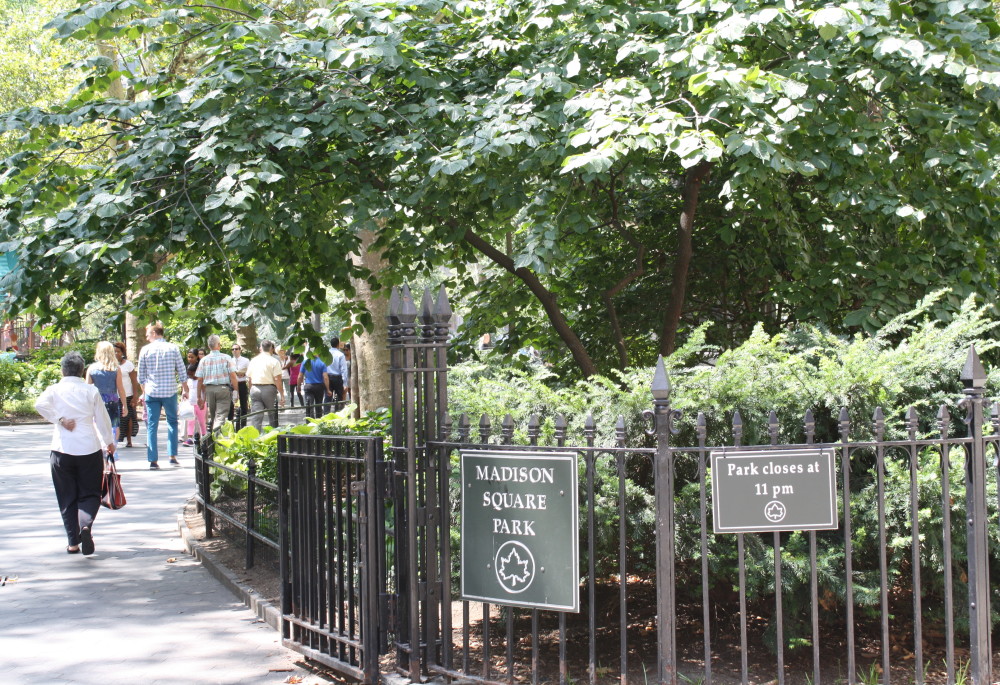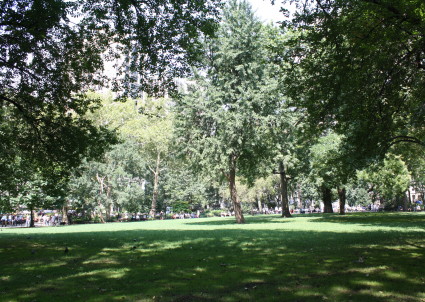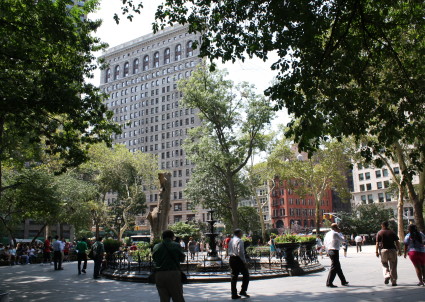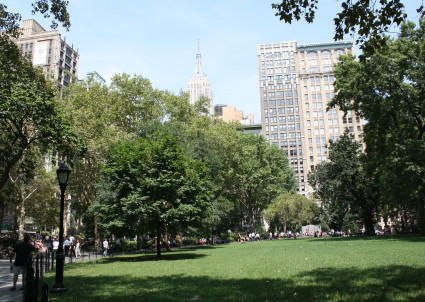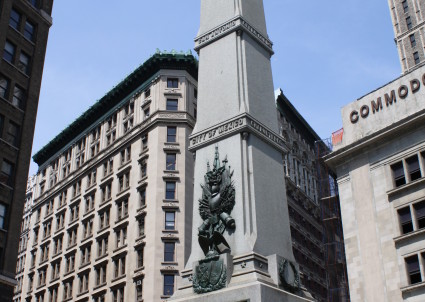Madison Square Park
1847; redesigned by Ignatz Pilat and William Grant, 1870
Designated a public space in the first city charter of 1686, the area of Madison Square Park was enlarged and changed hands several times throughout the 18th century for use as farmland. In 1780, the city reacquired 37 of its acres, which it then subdivided. Within the current confines of the park, the city constructed an arsenal in 1807 and designated a 44-block area (from the present day 23rd to 34th Streets and Third to Seventh Avenues) as a military parade ground. The arsenal and parade provided a key military post for maneuvers and drills during the War of 1812. In 1814, the parade ground was renamed Madison Square in honor of James Madison, the fourth President of the United States. At that time, it was reduced to the area between 23rd and 31st Streets and Sixth to Park Avenues. In 1825, the arsenal was transformed into the House of Refuge, operated by the Society for the Reformation of Youthful Delinquents, but the structure burned down in 1839.
In 1847, the city reacquired 23rd to 26th Streets between Fifth and Madison Avenues, leveling the ground and laying out formal pathways. After the park’s opening, magnificent residences and hotels cropped up along the park and the neighborhood became the city’s most elite address. Just west of the park, a small triangular parcel was created between 24th and 25th Streets where Broadway and Fifth Avenues intersect. The lot became an extension of Madison Square Park, and in 1857, a 51-foot granite obelisk designed by James Goodwin Batterson was erected to honor General William Jenkins Worth, for whom Fort Worth, Texas, and Worth Street in Lower Manhattan were also named. There are statues of several other notable men in the park: William H. Seward (Randolph Rogers, 1876), David Glasgow Farragut (Augustus Saint-Gaudens and Stanford White, 1881), Roscoe Conkling (John Quincey Adams Ward, 1893) and Chester Arthur (George Bissell, 1898). When the city’s first Department of Public Parks was established in 1870, the park was redesigned with formal and picturesque components, including walkways, open lawns and a large circular fountain at the south end. The park retains this general layout today, after a comprehensive restoration of the park was completed in 2001.
The southwest corner of 26th Street and Madison Avenue, just across from the park’s northeast corner, is a noteworthy site in the neighborhood’s commercial history. The site had been a passenger depot for Cornelius Vanderbilt’s New York and Harlem Railroad, but after the construction of the first Grand Central Depot in 1870, Phineas Taylor Barnum leased the space and converted it into his famous “Hippodrome,” the site of his first circus performances beginning in 1873. In 1874, P. T. Barnum subleased the site to Patrick Gilmore for his “Gilmore’s Garden,” a broad entertainment complex, with the P. T. Barnum circus continuing to be a feature in the summer months. In 1877, Cornelius Vanderbilt’s son William inherited the property and resumed its operation under the name “Madison Square Garden.” Vanderbilt expanded the complex with a grand new structure designed in the Spanish Revival style by McKim, Mead and White (1889-90). Due to financial deficits, Madison Square Garden moved uptown (first to 50th Street and Eighth Avenue and then to its present home at 33rd Street and Eighth Avenue) and the building was razed in 1925.
